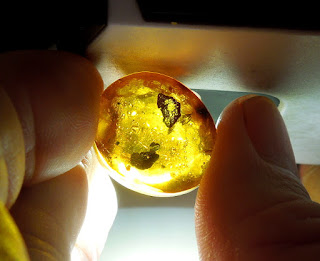Aguas Zarcas, a new CM2 carbonaceous chondrite. This is the freshest
recovered fall on Earth and the most pristine of it’s type since the Murchison fall of 1969. This meteorite
fell over rural Costa Rica on April 23, 2019. Falling stones peppered a
village and struck at least one home and a doghouse.
This
meteorite will be of great scientific interest for years to come. It
has odd properties not commonly seen in others of it's type. Some stones
have a bright blue-green irridescence on the fusion crust. Some of this
material emits a strong sulfurous smell. Lab analysis has shown that
this meteorite contains high levels of salts. Scientists have not had
access to a fresh CM2 meteorite like this for decades, and this fall
will surely keep researchers busy for a long time.
Note : just like the Murchison fall, this meteorite outgasses volatile organic compounds. If kept in a sealed container, you will be able to smell the pungent aroma of space-borne hydrocarbons. This odor is harmless and is a characteristic of some CM carbonaceous chondrites. It is thought that long ago, meteorites such as these helped deliver the ingredients of life to a primoridal Earth.
Note : just like the Murchison fall, this meteorite outgasses volatile organic compounds. If kept in a sealed container, you will be able to smell the pungent aroma of space-borne hydrocarbons. This odor is harmless and is a characteristic of some CM carbonaceous chondrites. It is thought that long ago, meteorites such as these helped deliver the ingredients of life to a primoridal Earth.
Specimens for collectors and science available at - https://galactic-stone.com/meteorites/meteorite-micromounts/agua-zarcas/
Image credit : Wikimedia Commons.




